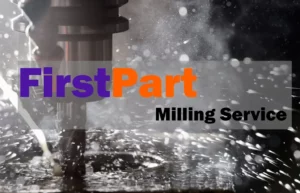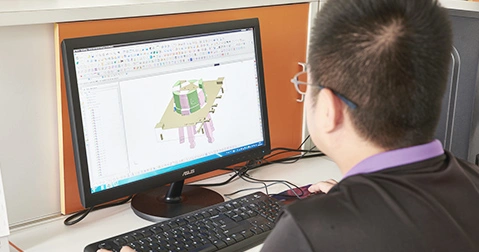How CAD and CAM Designs Have Improved Precision CNC Machining
Computer aided design (CAD) and Computer aided manufacturing (CAM) are two of the most widely used techniques alongside CNC machining service. These computer aided features have brought about several improvement in design, prototyping and machining over the last couple of years. How exactly do CAD and CAM technologies work, and why are they so influential in today’s CNC industry? Today, we uncover how computer aided innovations have revolutionized machining.
CAD and CAM, CAD to CAM.
Computer aided design (CAD) is quite different from Computer aided machining (CAM). Although these two features work together, their functions are very dissimilar. CAD functions are generally structured around design functions. With CAD software, design experts and engineers are able to create digital models of a product using specific geometric models that are represented in 3D. By tweaking one or two parameters, experts can alter models to create the desired end part. CAD also avails engineers the opportunity to design across multiple dimension plains, making parts with extremely complex geometries attainable. Furthermore, CAD software allows design experts to test their models by providing a digital environment to test and simulate their functionality in real-world like scenarios.
CAM involves the use of specialized software to control the tools used in machining a workpiece to obtain the final part. Its purpose is to achieve higher precision machining and faster production by ensuring that production is done along more accurate dimensioning, material consistency and geometrical accuracy. CAM is essentially designed to control and automate the machining process. CAM and CAD consequently go hand-in-hand. For a proper modern-day machining system to work efficiently, designers recommend having an optimal CAD model, a CAM system and the machine itself. The CAM software is what directs the machine to make the product by generating and directing the production tool parts.
Without the CAM software, the CAD model becomes useless. The CAD lays out how the design of the part should be and function. The CAM implements the CAD through the machine. To begin, experts will create a 2D or 3D model in CAD. This CAD file, which is to be imported into the CAM software, contains a set of properties to be interpreted and implemented to the machine by the CAM software. As soon as the model is imported, CAM prepares to machine after ensuring that the imported model:
• Is devoid of any geometrical issues that will affect the part manufacture or system errors
• Is set to run at optimal parameters such as feed, speed, cut height, dimensions, coolant, etc.
The CAM software also creates the coordinates (toolpath) for the machine to follow during the production process.
Improved Machining with the aid of CAD and CAM
Now that we have highlighted the basic features of CAD and CAM, here are the many ways that these computer-aided interventions have improved the CNC machining sphere:
1. Design flexibility
Perhaps one of the most important advantage of CAD and CAM, the designed flexibility that computer-aided features avails designers and experts has been the major reason behind many product success stories. CAD and CAD software allows product designers to develop functional end parts by creating products with complex geometry that stems from the freehandedness and design flexibility of the software.
Before the widespread use of CAD and CAM, modifications to designs were done manually. These modifications usually took days, weeks and even months to properly coordinate and iterate. Consequently, the overall production cycle would become stretched. With CAD and CAM, simple changes can be made to product design on-the-fly. The ability to stimulate the design in real-life scenarios also means that the changes made to the design can be immediately evaluated for functionality.
2. Manufacturing efficiency
Manufacturing efficiency is a broad time that covers reduced wastage, quick production and process optimization. With CAD and CAM, CNC machining is significantly improved as a process as the machine follows a well-oriented and design-optimal toolpath generated by the software.
CAM also allows users to check their process and material needs during simulation. This results in less material waste, energy savings and reduced cycle times. Another advantage is the improved chances of getting it right the first time. This can result in significant power savings and reduced tool wear from frequent re-use. With all these perks, the chances of production mistakes are lowered to the barest minimum, eliminating the risk of material waste when running expensive metal alloys, parts with complex structures or those that are material-demanding. CAD-CAM combinations in manufacturing therefore offers an overall strategy for cost-effectiveness and easier machining.
3. Rapid prototyping
CAD and CAM both make prototyping as seamless as possible when using CNC machining. In previous times, product prototypes that are non-confirming or deficient will have to be re-constructed from scratch, tested and re-evaluated without no means for immediately identifying design flaws.
Today, CAD makes designing and modification incredibly easy. Various concepts of the same design can easily be manufactured with a few workarounds in the design and immediately sent for testing across various phases with CAM.
4. Quicker turnaround
Using CAD and CAM software in part manufacture can increase production speed by over 50 percent. How? Well, when creating a CAD file, experts use a technique referred to as design for manufacturing (DFM) to create the design file in a manner that all aspects of production, material dimension and design orientation have been put into consideration. Also, with CAM software, engineers can generate high-speed toolpaths that optimize the movement of the CNC machine across its axis, creating high-precision cuts at increased speeds.
The overall effect of using CAD and CAM in production can cut production cycle by over 50 percent. In some instances, this number could even be over 60 percent.
5. Tailor-made productions
Several global surveys are confirmed the growing demand of consumers to have personalized and customized end-user experiences. With CAD and CAM technologies, machine shops can quickly create several custom designs that would otherwise be time and cost-consuming.
As businesses continue to strive to be customer-centric, CAD and CAM has contributed to the growth of tailor-made products, offering customers the ability to dictate product components, appearance and even include exclusive features without incurring the massive product development costs associated with traditional manufacturing.
FirstPart CNC Machining in China
At Firstpart, we have a full understanding of the CNC machining process, working with our team from the onset can help you avoid all the common pitfalls from CNC designing and get an optimal model that helps you save cost and optimize output.
FirstPart is one of China’s leading manufacturing hub for Additive, CNC and Conventional manufacturing techniques. We boast of excellent in-house capacity, labor force and logistics while delivering exceptional value for money. Our array of services include CNC machining, 3D printing, Rapid Tooling, Die casting, Rapid prototyping, Plastic Injection Molding, Urethane Casting, Aluminum Extrusion, Post-machining/Finishing services and much more.
Our services are flexible, saleable and innovative, with a team of engineers and design experts available to support you through your entire product development cycle.
Click here to get in touch with us and receive a free quote and project review. To contact us via phone or email, or for all other inquiries, please click here.










